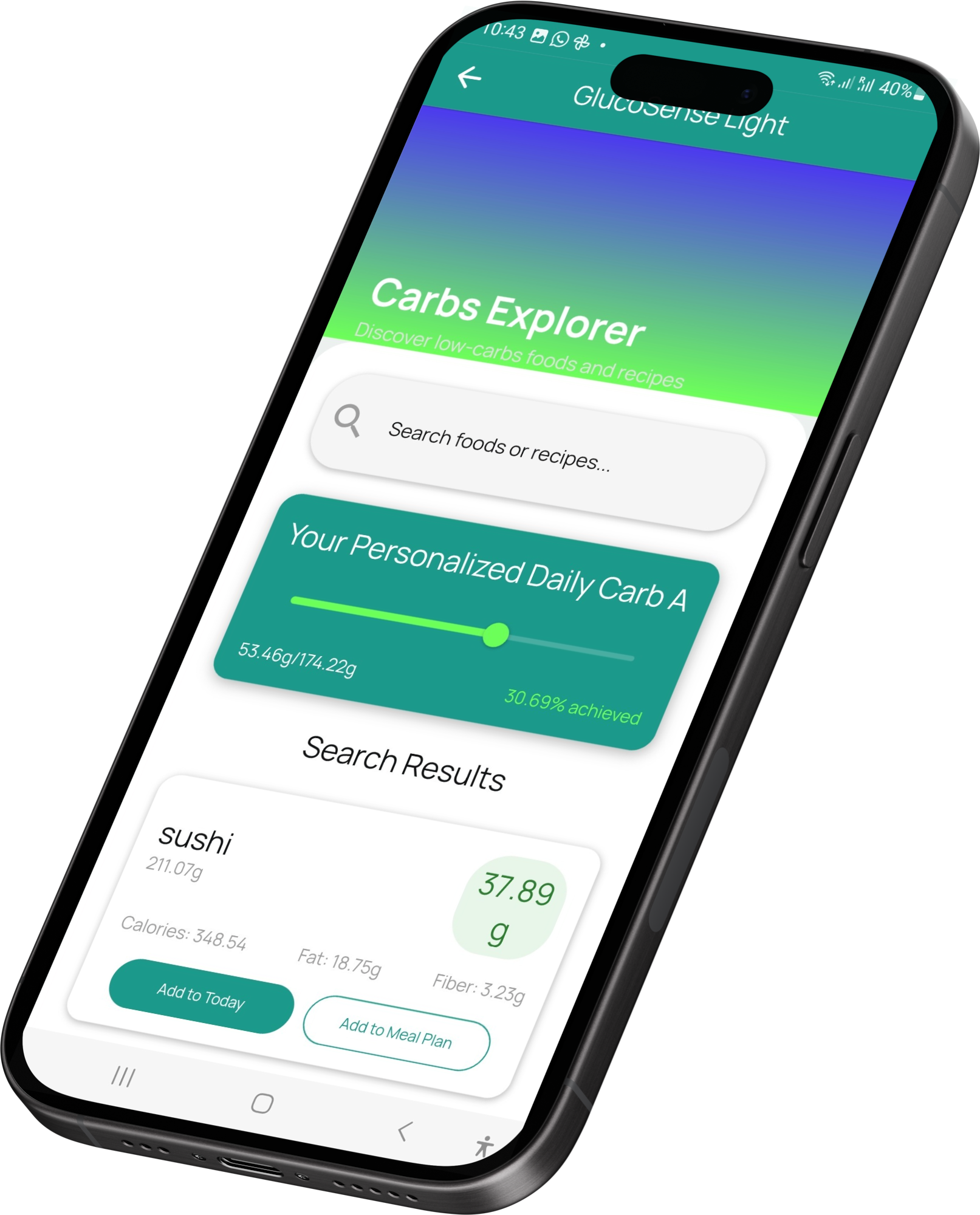Blog-Layout
Your Ultimate Guide on How to Increase Fiber Intake: Boost Your Health Today!
Dr. Emma Thompson • February 26, 2024
Your Ultimate Guide on How to Increase Fiber Intake: Boost Your Health Today!

Are you looking to revitalize your health, streamline your digestive system, and feel energized throughout the day? Increasing your dietary fiber intake might just be the game-changer you're looking for. In this informative guide, we delve deep into the world of dietary fiber and equip you with practical strategies for boosting your fiber consumption effortlessly. Get ready to transform your health as we explore the ins and outs of dietary fiber tune-up!
## Understanding Dietary Fiber: Your Health's Silent Ally
Before we unveil the secrets to a fiber-rich diet, let's first unravel what fiber is. Dietary fiber, found mainly in fruits, vegetables, whole grains, and legumes, is a plant-based nutrient that the body can't digest. It comes in two forms – soluble and insoluble – both of which champion your health in unique ways. Soluble fiber dissolves in water, forming a gel-like substance that can lower blood cholesterol and glucose levels. Insoluble fiber, on the other hand, assists in adding bulk to your stool and aids in bowel regularity.
## The Hidden Benefits of High-Fiber Foods
Why should "how to increase fiber intake" become your new wellness mantra? The benefits are numerous. A fiber-rich diet contributes to:
- **Weight Management**: Fiber-rich foods are generally more filling, making you feel satiated longer, which can help curb overeating.
- **Cardiovascular Health**: A considerable body of research suggests that high fiber intake is linked to a reduced risk of heart disease.
- **Blood Sugar Control**: By slowing down the absorption of sugar, fiber helps regulate blood sugar levels.
- **Digestive Health**: Fiber aids in maintaining bowel health, decreasing the likelihood of constipation, and may reduce the risk of colon cancer.
## Simple Strategies to Increase Your Fiber Intake
Ready to welcome more fiber into your life? Follow these expert tips:
1. **Start With Breakfast**: Begin your day with a high-fiber breakfast cereal or oatmeal topped with acacia fiber, berries or sliced banana.
2. **Whole Grains for the Win**: Swap out white bread, rice, and pasta for their whole-grain counterparts. Look for labels that say "100% whole grain" or "whole wheat."
3. **Snack Smart**: Opt for fiber-packed snacks like raw vegetables, nuts, seeds, or air-popped popcorn instead of chips or candy.
4. **Beans and Legumes**: Include a variety of beans, lentils, and chick peas in your diet. They’re incredibly versatile and can be added to soups, salads, tacos, and more.
5. **Fruits and Vegetables – Make Them Your Staples**: Aim to fill half your plate with fruits and vegetables at every meal. Keep the skin on when appropriate, as it often contains a good amount of fiber.
6. **Incorporate More Salads**: A large, raw salad with a variety of vegetables can be a fiber powerhouse. Top it with nuts or seeds for an extra fiber boost.
7. **Experiment with Fiber Supplements**: If your diet falls short, acacia fiber supplements can help fill the gap. Acacia fiber are the best source of fiber and other essential nutrients ( magnesium, calcium and potassium).
8. **Hydrate**: Increase your water intake as you up your fiber intake to help the fiber move through your digestive system and avoid constipation.
9. **Increase Fiber Intake Gradually**: To prevent bloating or gas, gradually increase your fiber intake over a few weeks. This allows your digestive system to adjust.
10. **Read Those Labels**: Pay attention to nutrition labels and choose foods with higher fiber content.
## Creating a High-Fiber Meal Plan: A Sample Day
Empower your health with a fiber-focused meal plan. Here’s a sample day to inspire you:
**Breakfast**: Overnight oats made with rolled oats, chia seeds, sliced strawberries, and almond milk.
**Morning Snack**: A small handful of almonds and a fresh apple.
**Lunch**: Quinoa salad with black beans, bell peppers, cucumbers, and avocado.
**Afternoon Snack**: Carrot sticks with hummus.
**Dinner**: Grilled chicken or tofu with a side of roasted Brussels sprouts and sweet potato.
**Dessert**: A bowl of fresh raspberries or baked pear with cinnamon.
## Tying It All Together: Your High-Fiber Lifestyle
Remember, increasing fiber intake isn’t just about changing your diet; it’s about transforming your lifestyle. Ensure you’re eating a diverse range of foods to not only meet your fiber goals but to also get a wide spectrum of nutrients that can further enhance your health.
Feeling motivated to make fiber a focus in your diet? Share your experience and tips with us in the comments below, and let's inspire each other towards better health!
By incorporating these tactics into your daily routine, you’ll soon reap the countless benefits of a fiber-rich diet. Not only will your digestive system thank you, but you'll also be taking significant strides towards overall well-being and longevity. It's not just about answering the question of how to increase fiber intake; it's about embracing a holistic approach for a healthier, more vibrant life.
## Fiber Intake: Building Blocks for a Healthier Gut Microbiome
Another major advantage of boosting your fiber intake is the positive impact it has on your gut microbiome. A diverse and rich gut flora is crucial for immune function, mental health, and even preventing certain chronic diseases. Fiber acts as a prebiotic, feeding the good bacteria in your gut and helping them to flourish.
## Innovating Your Recipes with Fiber
Here are a few creative ways to sneak more fiber into your classic favorites:
- Make a hearty chili or stew with kidney beans and a variety of vegetables.
- Use whole grain flours in your baking – try making muffins with oat flour or whole wheat banana bread.
- Incorporate vegetables like spinach or pumpkin into smoothies. They blend in seamlessly and ramp up the fiber content.
## Overcoming Fiber Intake Challenges
Some might face challenges when trying to increase their fiber intake, such as digestive discomfort or lack of ideas to maintain a high-fiber diet. To overcome this, consider:
- Introducing fiber-rich foods slowly and in small amounts.
- Cooking fiber-rich foods, as this can make them easier to digest.
- Keeping a food diary to help identify what works best for your digestive system.
## Embrace the Fiber Lifestyle!
A high-fiber lifestyle isn't just about numbers and targets, it's a commitment to enhancing your overall diet for a healthier life. It's about creating habits that you can maintain for the long term, enjoying a rich variety of flavorful foods that also boost your health.
So, get creative in the kitchen, enjoy your meals, and take pride in the steps you're taking towards better health. An increase in fiber intake can mean an increase in life's vitality. Make that change, one fiber-rich bite at a time!
And remember, whether you're embarking on this journey alone or encouraging your family to join in, every step forward is a step towards a healthier future. We hope this guide has illuminated the path to increasing your fiber intake and that it serves as a catalyst for lasting health and wellness.
Share your journey with us and join the conversation! What are your favorite high-fiber foods? How have you successfully increased your fiber intake? Let's create a community of health enthusiasts who support and inspire one another!
*This is more than just dietary advice; it's a pathway to a more energetic and fulfilling lifestyle. Embrace the fiber-filled journey with gusto!*
## The Long-Term Vision for Your Fiber-Rich Diet
Living a high-fiber lifestyle isn't a fad diet or a temporary fix—it's a sustainable way to improve your everyday living. By incorporating these changes into your day-to-day life, you can help to ensure that you not only reach your dietary goals but also make a long-lasting, positive impact on your overall health.
## Navigating Eating Out and Keeping Fiber on the Menu
When dining out, don't shy away from asking for whole grain bread options, adding a side of vegetables, or starting your meal with a robust salad. Many restaurants are accommodating dietary preferences, and it’s becoming easier to make fiber-rich choices wherever you go.
## Staying Motivated and Tracking Your Progress
Keep a record of your fiber intake and how it correlates with improvements in your health and well-being. This can keep you motivated and provide tangible evidence of the positive changes you're making.
## Partnering with Healthcare Professionals
If you have any concerns about increasing your fiber intake or if you suffer from any digestive disorders, it is always best to consult with a healthcare professional. They can provide personalized advice and ensure that your dietary changes are suitable for your specific needs.
## Concluding Thoughts
Increasing your fiber intake has profound benefits that extend beyond digestion. It's about cultivating a life that’s full of vitality and wellness. Through strategic meal planning, mindful eating, and innovative cooking, you can elevate your fiber intake and, in turn, enhance the quality of your life.
Remember to reach out to us with your stories, questions, and favorite fiber-rich recipes – your insights enrich our community and further the conversation on health!
In a world brimming with fast food and quick fixes, choosing the path of fiber is a testament to your dedication to your health. Now that you're equipped with the knowledge and tactics to increase your fiber intake, you’re all set to embark on this transformative journey.
*Let your adventure towards a fiber-full life begin!*
---
Are you inspired to integrate more fiber into your diet? Excited to discover new fiber-rich recipes? Stay tuned to our blog for more health tips, nutritious recipes, and wellness strategies. Share this guide with your friends and family and join the movement towards a healthier, fiber-rich lifestyle!
*Together, let's spread the word on how to increase fiber intake and enrich our lives with health and happiness!*

By VitalFiberOne Naturals Inc.
•
February 8, 2025
Revolutionize your diabetes care with the power of AI! Introducing GlucoAI Precision Technology, a game-changing innovation that's transforming the way we manage diabetes. This cutting-edge technology uses artificial intelligence to provide personalized insights and precise glucose monitoring, empowering individuals to take control of their health. Say goodbye to guesswork and hello to data-driven decision making. Learn how GlucoAI is revolutionizing diabetes care and improving lives.

By VitalFiberOne Naturals Inc.
•
January 24, 2025
Making grocery shopping a breeze for diabetics! GlucoSense is revolutionizing the way people with diabetes shop for groceries. With its innovative technology, GlucoSense makes it easy to identify and purchase diabetes-friendly food products. Say goodbye to hours of research and label-reading, and hello to a stress-free shopping experience. In this video, we'll show you how GlucoSense is changing the game for diabetics and making healthy grocery shopping a whole lot easier. Whether you're living with diabetes or know someone who is, this video is a must-watch!

By VitalFiberOne Naturals Inc.
•
December 20, 2024
Are you tired of feeling uncertain about your diabetes management? Do you have burning health questions that need answers? In this blog, our panel of diabetes experts are here to provide you with the clarity and confidence you need to take control of your health. From understanding blood sugar levels to managing medications and diet, our experts will cover it all. Get ready to have your most pressing questions answered and start living your best life with diabetes. Whether you're newly diagnosed or have been living with diabetes for years, this video is for you. So sit back, relax, and let's dive into the world of diabetes management together!

By VitalFiberOne Naturals
•
December 18, 2024
Indulge in the flavors of the Middle East with our Fiber Rich Baked Falafel recipe, served with a side of creamy Tahini Sauce! In this video, we'll show you how to make crispy on the outside, fluffy on the inside falafel using chickpeas, herbs, and spices, all while keeping it healthy and fiber-rich. The perfect vegetarian snack or meal option. Our tahini sauce recipe is a game-changer, made with tahini paste, garlic, lemon juice, and olive oil. It's creamy, tangy, and pairs perfectly with our baked falafel. Get ready to elevate your snack game with this easy-to-make and delicious recipe!

By VitalFiberOne Naturals Inc.
•
November 17, 2024
Unlock the secret to a healthier and fitter you with Fiber-Guru's 4 weeks FREE trial! In this blog, we'll introduce you to a revolutionary program designed to help you achieve your fitness goals and transform your body in just a few weeks. With Fiber-Guru, you'll get access to a comprehensive fitness plan, personalized coaching, and a supportive community to help you stay motivated and accountable. Say goodbye to fad diets and hello to a sustainable lifestyle that will leave you feeling energized, confident, and empowered. Try Fiber-Guru today and start your fitness journey with a 4-week free trial!

By VitalFiberOne Naturals Inc.
•
August 26, 2024
Are you trying to lose weight and wondering about the best time to eat? In this video, we dive deep into the optimal meal timing for weight loss. Should you prioritize a smaller breakfast, a moderate lunch, or a light dinner? We explore the science behind meal timing and its impact on your metabolism, hunger levels, and overall weight loss journey. Discover the pros and cons of each meal and learn how to structure your eating schedule for maximum results. Whether you're a breakfast lover or a dinner devotee, this video provides valuable insights to help you make informed choices. Don't miss out on tips and strategies that can transform your eating habits and support your weight loss goals! Tune in and find out the best time to eat for effective and sustainable weight loss. Remember to like, comment, and subscribe for more health and wellness tips!






